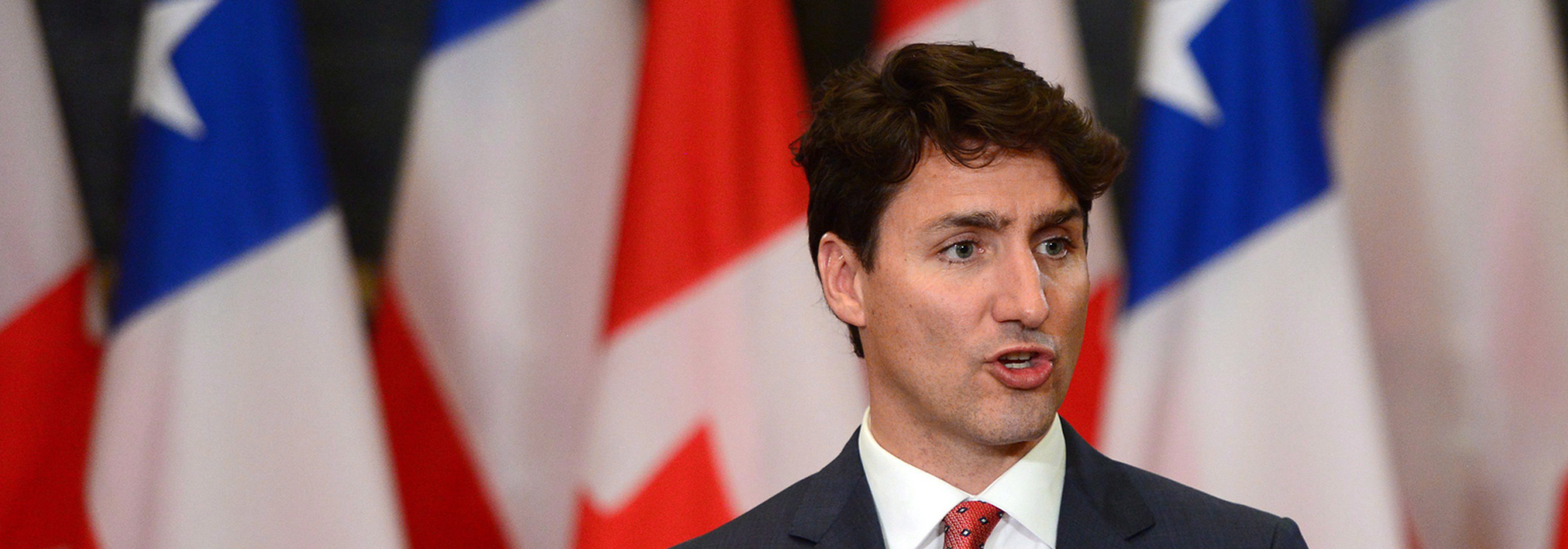
One of the early pieces of advice Canada is receiving as it prepares its strategy for renewed NAFTA negotiations with the United States is that when you’re up against a schoolyard bully who is determined to win at all costs, the best defence is a good offence.
So could Donald Trump’s decision to pull his country out of the Paris climate change agreement be a cornerstone for that strategy? Particularly if Canada can morph the United States’ erstwhile border tax threat into a defence of its own trade and climate interests?
At least two different formulations of a border carbon tax have been presented since the Americans went to the polls last November.
Within two weeks of the US election, Nicolas Sarkozy, a French presidential candidate at the time, proposed that if Trump took the US out of the Paris deal, Europe should impose a 1 to 3 percent border carbon tax on US goods, reprising an idea that Sarkozy and German Chancellor Angela Merkel had floated in 2009.
In March, US House Speaker Paul Ryan and Ways and Means Committee Chair Kevin Brady mooted a plan to tax US imports at the border while exempting exports, as part of a wider effort at tax reform. That idea ran into fatal opposition from Trump administration officials (and at least some sources of bedrock Republican support). But not before Canadian Foreign Affairs Minister Chrystia Freeland raised the issue with US Commerce Secretary Wilbur Ross and Secretary of State Rex Tillerson, warning Tillerson that “if such an idea were ever to come into being, Canada would respond appropriately.”
Carving out a new agenda
Freeland’s response was appropriate, and it was a solid opener for Canada’s “doughnut” strategy, “aimed at advancing Canada’s interests on issues ranging from trade to climate change, in the face of an unpredictable if not outright hostile White House,” as we wrote on the Energy Mix. This strategy has since seen the Trudeau government work to isolate the Trump administration by cultivating a wider network of US friends and allies. But state governors whose economies depend on Canadian imports — including in some cases clean energy imports — will have only limited influence over trilateral negotiations led by the executive branch in Washington.
This leads us back to the matter of offence versus defence, and whether Trump’s Paris misadventure represents an opportunity for Canadian negotiators. Parkland Institute founder and former director Gordon Laxer framed the underlying strategy question in a Vancouver Sun op-ed in June, suggesting that Canadian thinking has focused too narrowly on trade staples like dairy, softwood, buy-American policies and trade dispute panels.
“They’re important issues, but Canada is playing defence,” he wrote. “A hockey team that only plays defence will lose. Going up against a U.S. president who boasts that he is the winner who takes all, Canada must lead with its own demands.”
What if a close symmetry between trade and climate strategy is one of those demands?
Chris Hope of Cambridge University’s Judge Business School estimated a border carbon tax would be US$150 to $250 per tonne of carbon dioxide, or about 6 to 10 percent on US exports.
“If it is to be proportionate, it should cover the harm caused to the Earth from the production of the goods, a harm that will not be reflected in their price if the US presses ahead with the unfettered use of fossil fuels,” Hope wrote.
In his report on the idea of a border carbon tax, Quartz London reporter Akshat Rathi said that the “diplomatic fallout from such a move…would surely test America’s trading partners’ resolve in their commitment to reducing emissions.”
But a more selective measure that favours US states that have effective carbon prices or clean energy industrial strategies could be part of a determined subnational diplomacy on Canada’s part, allowing it to stand firm on climate at the NAFTA table.
Regaining control over Canadian energy
The NAFTA negotiations are also an opportunity to reopen a battle Prime Minister Jean Chrétien fought and lost against the Bill Clinton administration in 1994, says Laxer.
Canada “signed away to another country first access to its energy resources” under NAFTA, Laxer writes. NAFTA’s proportionality rule, which Mexico successfully fought but Canada ultimately accepted, “obligates Canada to make available to the U.S. the same share of its oil, natural gas and electricity as it has in the previous three years,” currently more than 50 percent of natural gas and about 75 percent of oil production.
At stake is Canada’s ability to guide the pace of oil and gas production as the industry enters a period of “managed decline” and the country’s deliberately diminished fossil fuel workforce shifts to more economically sustainable work. Whether the proportionality rule can be reopened and resolved is one question for Canadian negotiators. The far more important issue is whether Canada can align its trade position with its attempts at climate leadership and energy innovation, to prevent a failure from a bygone era from limiting progress on the most important economic and geopolitical issue the country faces.
In the not-too-distant future, an important issue may well be how NAFTA rules will affect clean electricity imports and exports, which will be cornerstones of a 21st-century postcarbon economy. But how can we get from here to there? And do NAFTA’s current rules make it more challenging to draw down Canada’s fossil fuel production in response to crashing world oil prices and mounting concern about greenhouse gas emissions?
“The proportionality rule has never been invoked,” Laxer writes, “but its existence in NAFTA deters Canadian governments from winding down carbon exports” at a time when Ottawa’s ability to meet even its Harper-era climate targets is still in doubt.
Making trade a tool for climate action
If Canadian trade negotiators want to play offence on trade and climate, they will find that clean energy advocates have already looked at a policy pathway to reposition NAFTA.
In April, Sierra Club Canada Foundation presented its list of “eight essential changes to an environmentally destructive deal,” which started with a pitch for enforcement of the Paris agreement.
“Any deal that replaces NAFTA must create a fair playing field by requiring each participating country to adopt, maintain, and implement policies to ensure compliance with domestic environmental laws and important international environmental and labour agreements, including the Paris climate agreement,” the foundation stated. “These commitments must be included in the core text of the agreement and made enforceable via an independent dispute settlement process.”
In November 2016, the US Sierra Club had issued a discussion paper on a “climate-friendly approach” to trade. Styled as “something positive for people to rally behind” in the wake of the US election, the paper called for trade rules that protect existing climate policies, support new climate protections and reduce the climate impact of cross-border commerce.
“While trade agreements should encourage trade in goods that meet public interest criteria, they should discourage trade in climate-polluting fossil fuels, in addition to tackling the climate emissions that result from shipping and international shifts in production,” the paper stated. “To secure trade agreements that include such climate-friendly rules, the opaque and corporate-dominated system for negotiating U.S. trade deals should be replaced with an open, public process,” it went on.
In today’s trade policy environment, it may almost be a non sequitur to suggest climate protection as a centrepiece of Canada’s NAFTA strategy. But the postcarbon transition is about economic opportunity as much as it is about environmental survival. And a compelling, well thought out surprise may be exactly the type of offence Team Canada needs to present in order to change expectations at the NAFTA negotiations and pull the North American agenda in a direction the rest of the world is already headed.
Thanks to Guy Dauncey of EarthFuture for sourcing some of this story.
This article is part of the Trade Policy for Uncertain Times special feature.
Photo: Prime Minister Justin Trudeau takes part in a joint press conference on Parliament Hill in Ottawa on Monday, June 5, 2017. Trudeau was spending time calling up allies in Europe and Asia as he seeks to forge ahead with climate change policies and international co-operation in a world of « America First. » THE CANADIAN PRESS/Sean Kilpatrick
Do you have something to say about the article you just read? Be part of the Policy Options discussion, and send in your own submission. Here is a link on how to do it. | Souhaitez-vous réagir à cet article ? Joignez-vous aux débats d’Options politiques et soumettez-nous votre texte en suivant ces directives.








